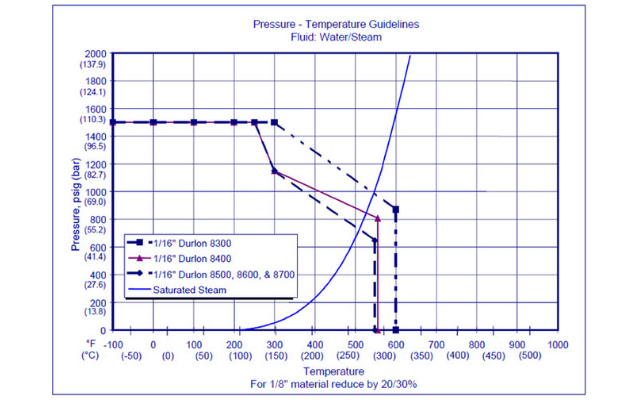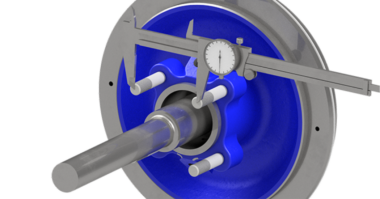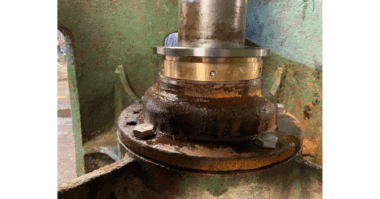Contributor: Chett Norton, C.E.T., Triangle Fluid Controls Ltd.
There are 3 specific attributes to thoroughly understand when choosing the correct gasket material for a specific application: (1) Pressure (2) Temperature (3) Media. All of these attributes are straight-forward; however, most gasket applications are not based on 20°C or ambient test conditions in a lab, so let’s look more in-depth at each topic and discuss how they interact with each other.
The pressure is normally stated on the technical data sheet and refers to the pressure that the gasket is rated to at ambient temperature, so, for instance, Durlon® 8500 is rated for 1500 psig at 20°C. Since soft gaskets are only recommended for both Class 150# & 300#, 1500 psi seems adequate, right? Well if at ambient temperature, the max working pressure for a class 300# flange is 740 psi for WCB piping / flanges and we used 1.5x this working pressure to cover system pressure tests, it would still only be 1140 psig – still below the max allowable for the material. Unfortunately, it is not this simple.
What we sometimes fail to realize is that as the application temperature increases, the materials ability to withstand pressure decreases. Based on this, using a material’s Pressure vs. Temperature chart or referencing the materials PxT number are both quick tools that can be used to help verify if the material you have selected will work for the pressure and temperature conditions of your application. Many material tech sheets feature a “straight-forward” and easy-to-use PxT chart. The chart has a line that shows you a ‘go’ or ‘no-go’ area based on the pressure and temperature of the application for the material. Normally the pressure is listed on the Y-axis and the temperature is listed on the X-axis of the chart. Plotting the point at which these two values intersect will advise whether it is safe to use the material or not. If the point is inside the recommended line, it is generally safe to use, while being outside the line indicates not safe to use or recommends you contact engineering for more information. See the chart below for reference.
A second way to quickly check if the material is suitable for the application, is the PxT number. In some cases, the material-technical data sheet for the gasket material will give you a unit-less PxT number. For instance, Durlon 8500 material has a PxT (Psi x °F) value of 250,000 for 1/8″. Now what you can do is divide this number by either the working pressure or temperature (the number used to divide cannot exceed the max allowable temperature or pressure allowed for the material) and it will give you the maximum allowable of the variable not used. Allow me to give you an example:
Durlon 8500, PxT = 250,000
What is the maximum allowable pressure that the gasket can handle at 400°F?
250,000 / 400°F = 625 psi
Therefore, the maximum pressure the material can be used at 400°F is 625psi.
Additionally, media reactivity is also dependent on temperature. In a lot of cases, a materials chemical resistance at ambient temperature is good; however, at elevated temperature, the chemical is much more reactive and/or aggressive and renders the material not chemically compatible anymore. Therefore, it is very important when verifying chemical resistance, the temperature of the material needs to be taken into consideration besides the concentration of the media itself.
So, remember to verify these 3 items (Pressure, temperature, and media) and you can simplify it further by using the Durlon® iGasketPlus app to help recommend the correct material. So, play it safe, use the app and remember to always “Keep the fluid between the pipes”.




